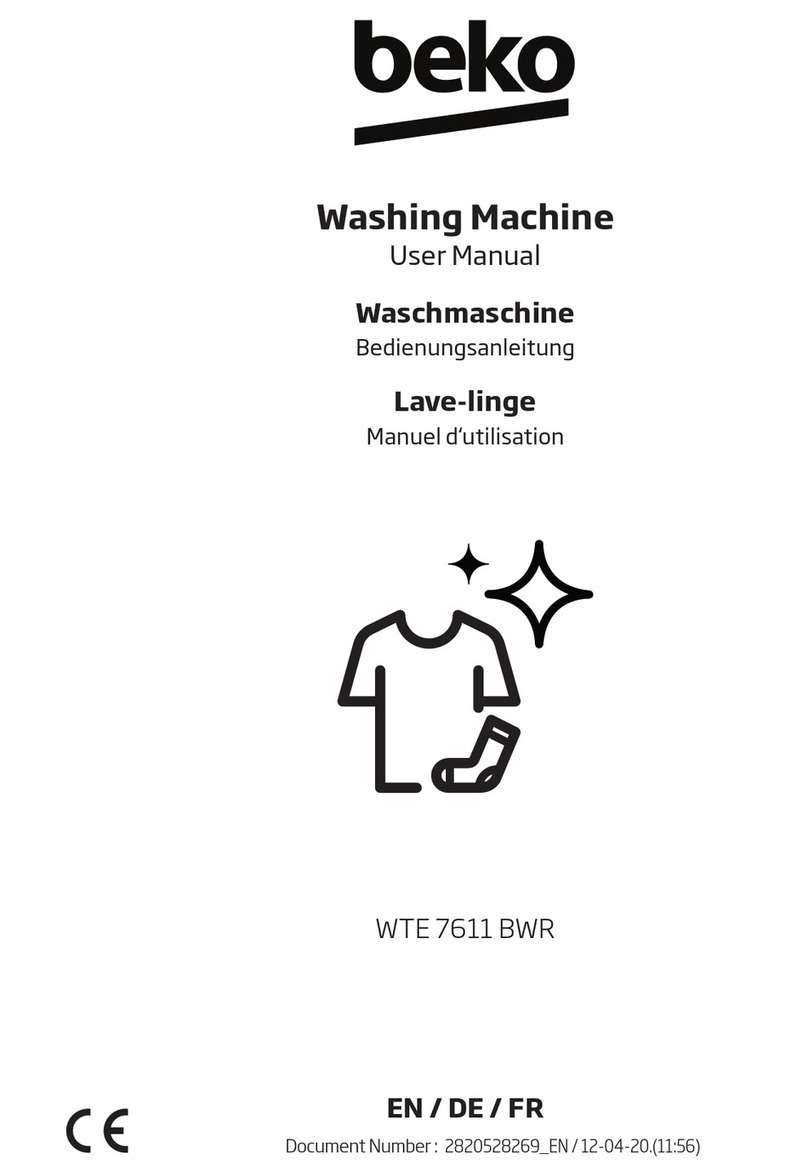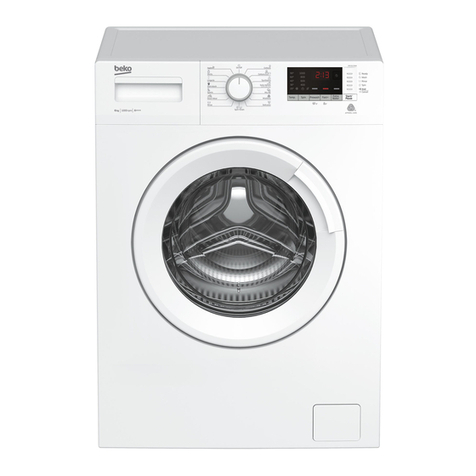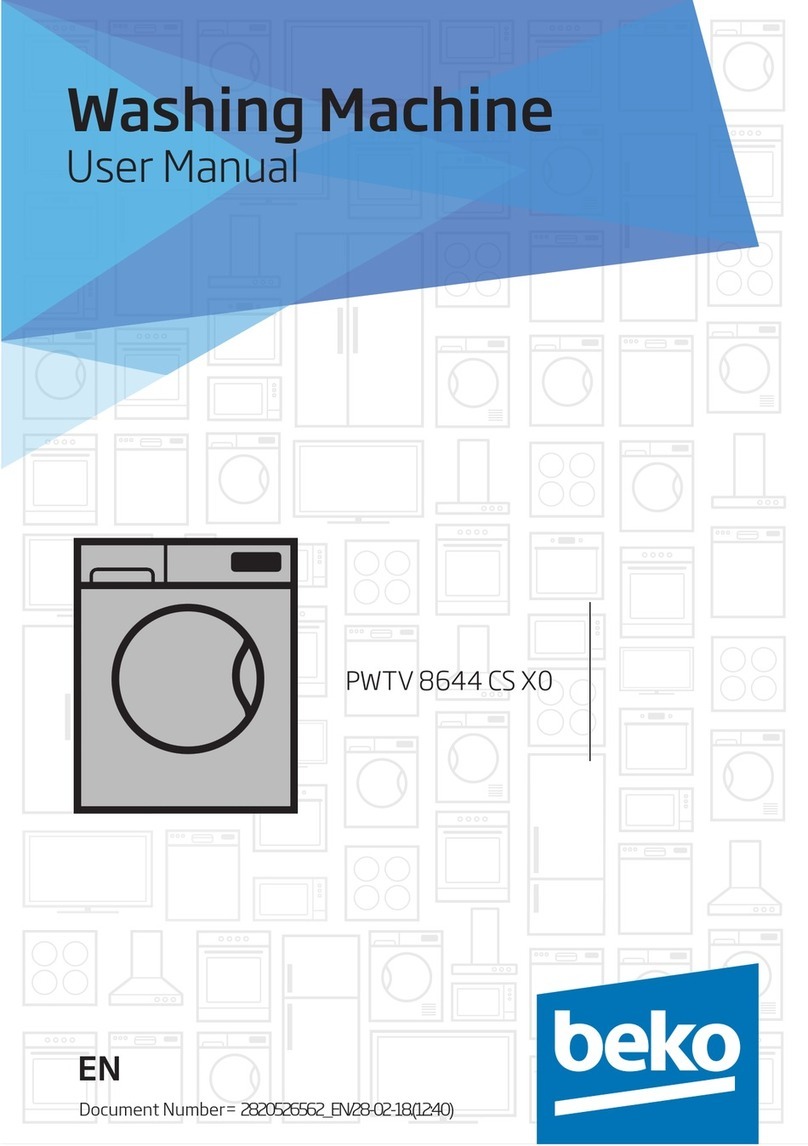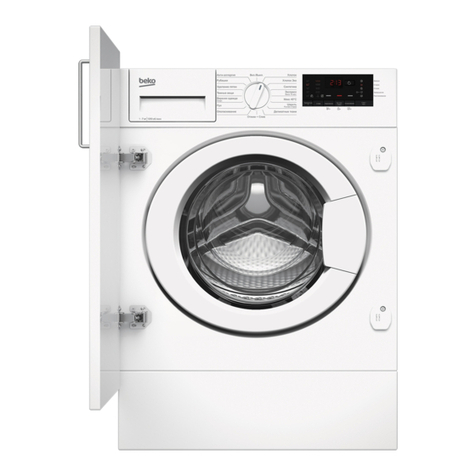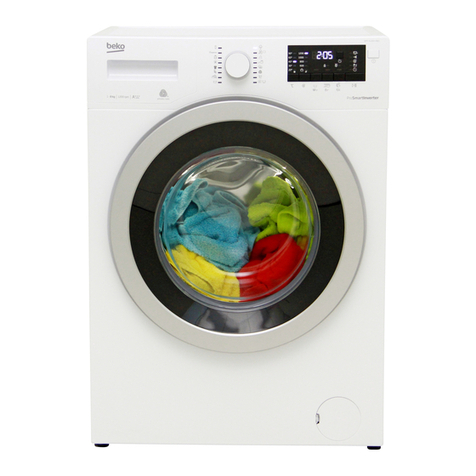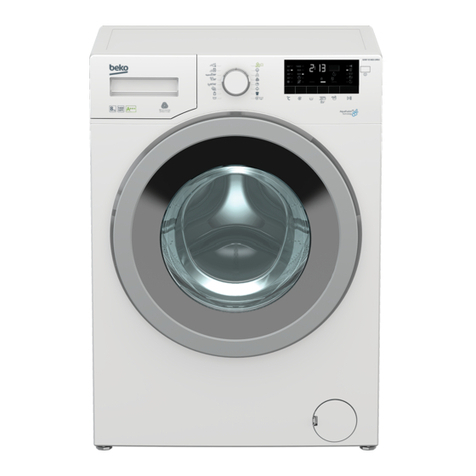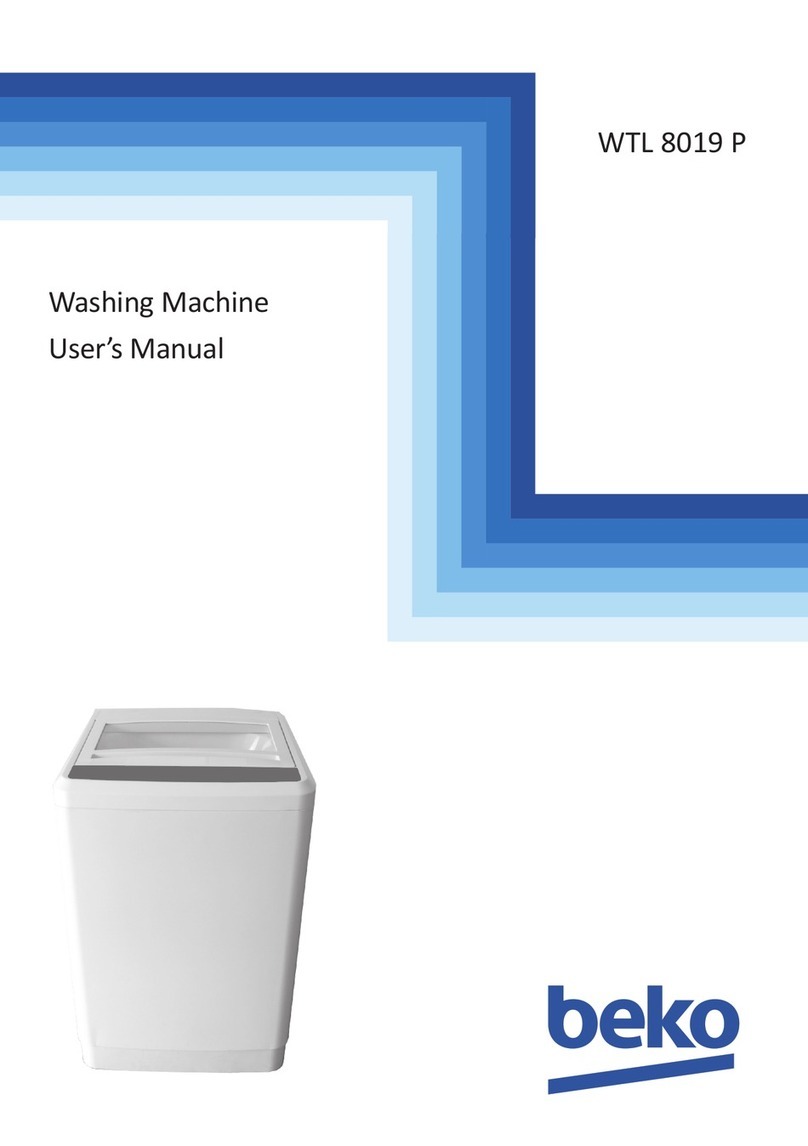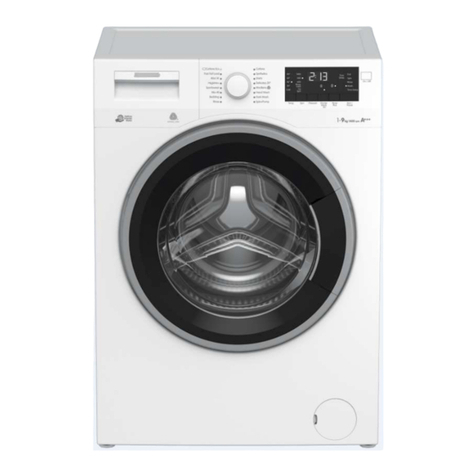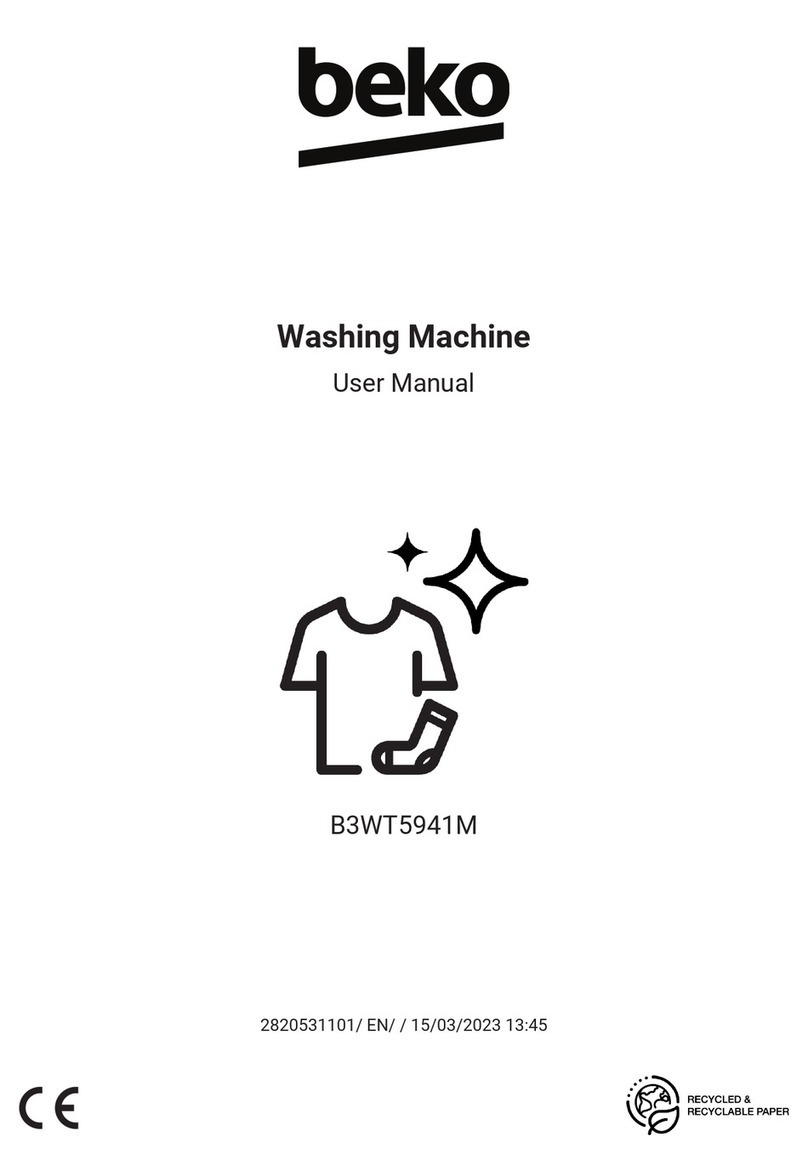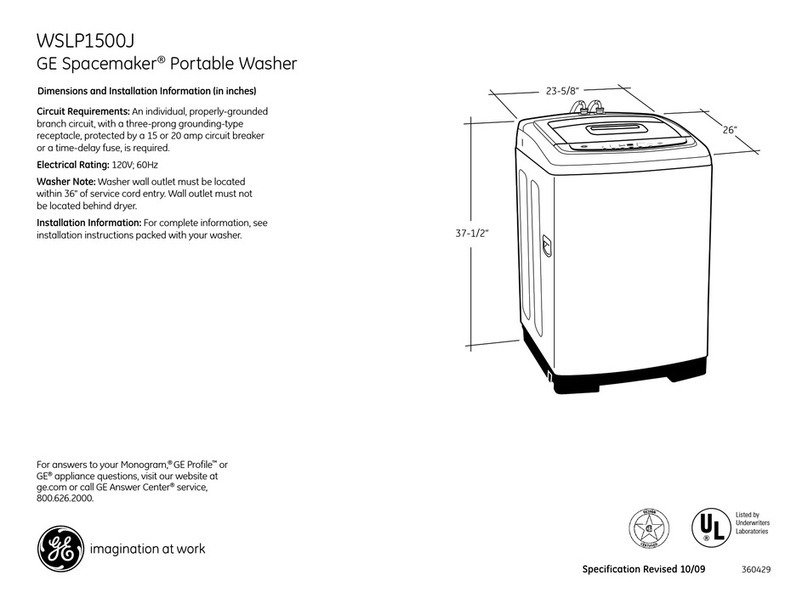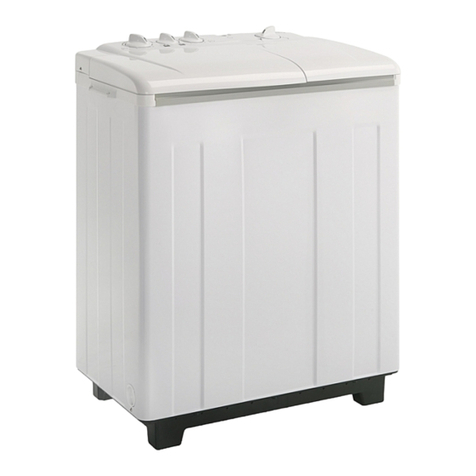
3EN
1 Important safety instructions
This section contains safety instructions that will
help protect from risk of personal injury or property
damage. Failure to follow these instructions shall
void any warranty.
General safety
• This product should not be used by persons
with physical, sensory or mental disorders or
unlearned or inexperienced people (including
children) unless they are attended by a person
who will be responsible for their safety or who
will instruct them accordingly for use of the
product.
• Children of less than 3 years should be kept
away unless continuously supervised.
• Never place the product on a carpet-covered
floor; otherwise, lack of airflow beneath the
machine will cause electrical parts to overheat.
This will cause problems with your product.
• Do not operate the product if the power cable
/ plug is damaged. Call the Authorized Service
Agent.
• Have a qualified electrician connect a
16-Ampere fuse to the installation location of
the product.
• If the product has a failure, it should not
be operated unless it is repaired by the
Authorized Service Agent. There is the risk of
electric shock!
• This product is designed to resume operating
in the event of powering on after a power
interruption. If you wish to cancel the
programme, see "Cancelling the programme"
section.
• Connect the product to a grounded outlet
protected by a fuse complying with the values
in the "Technical specifications" table. Do not
neglect to have the grounding installation
made by a qualified electrician. Our company
shall not be liable for any damages that
will arise when the product is used without
grounding in accordance with the local
regulations.
• The water supply and draining hoses must be
securely fastened and remain undamaged.
Otherwise, there is the risk of water leakage.
• Never open the loading door or remove the
filter while there is still water in the drum.
Otherwise, risk of flooding and injury from hot
water will occur.
• Do not force open the locked loading door.
The loading door will be ready to open just a
few minutes after the washing cycle comes to
an end. In case of forcing the loading door to
open, the door and the lock mechanism may
get damaged.
• Unplug the product when not in use.
• Never wash the product by spreading or
pouring water onto it!There is the risk of
electric shock!
• Never touch the plug with wet hands! Never
unplug by pulling on the cable, always pull out
by grabbing the plug.
• Use detergents, softeners and supplements
suitable for automatic washing machines only.
• Follow the instructions on the textile tags and
on the detergent package.
• The product must be unplugged during
installation, maintenance, cleaning and
repairing procedures.
• Always have the installation and repairing
procedures carried out by the Authorized
Service Agent. Manufacturer shall not be
held liable for damages that may arise from
procedures carried out by unauthorized
persons.
Intended use
• This product has been designed for domestic
use. It is not suitable for commercial use and it
must not be used out of its intended use.
• The product must only be used for washing
and rinsing of laundry that are marked
accordingly.
• The manufacturer waives any responsibility
arisen from incorrect usage or transportation.
Children's safety
• Electrical products are dangerous for the
children. Keep children away from the product
when it is in use. Do not let them to tamper
with the product. Use child lock to prevent
children from intervening with the product.
• Do not forget to close the loading door when
leaving the room where the product is located.
• Store all detergents and additives in a safe
place away from the reach of the children.
2 Installation
Refer to the nearest Authorised Service Agent for
installation of the product. To make the product
ready for use, review the information in the user
manual and make sure that the electricity, tap
water supply and water drainage systems are
appropriate before calling the Authorized Service
Agent. If they are not, call a qualified technician
and plumber to have any necessary arrangements
carried out.
CPreparation of the location and electrical,
tap water and waste water installations at
the place of installation is under customer's
responsibility.
BInstallation and electrical connections of the
product must be carried out by the Authorized
Service Agent. Manufacturer shall not be
held liable for damages that may arise from
procedures carried out by unauthorized
persons.
APrior to installation, visually check if the
product has any defects on it. If so, do not
have it installed. Damaged products cause
risks for your safety.
